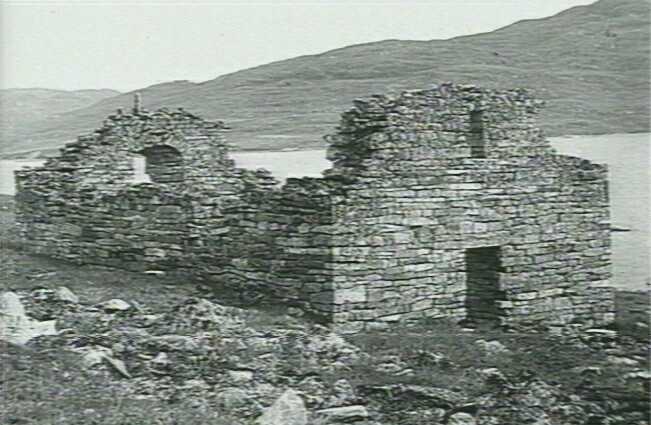Attempts to attribute historical events to variations in climate are often criticised but there is no doubt that climate has always had a huge impact on humans, affecting the success of harvests, disease epidemics and many other events.
In the not too distant past, Europe experienced a remarkable number of climate changes. From the tenth century, warm temperatures in the North Atlantic region allowed vineyards to be cultivated in England and the Vikings were able to migrate northwards and colonise parts of Greenland and Newfoundland.
 |
Ruins of the Hvalsey church in Norse Greenland. The Viking settlement had disappeared by the early fifteenth century.
|

This Medieval Warm Period allowed humans to cultivate areas further north and at higher altitudes. The milder climate and the expansion of crops and pastureland probably resulted in other species expanding their ranges as well.
The name of Waldrapp (forest crow) seems to link the northern bald ibis to woodlands, an ecosystem that now seems shocking, but maybe in the medieval warm period NBI was not uncommon in the clearings of the alpine forests.
The climate in Europe then became cooler, and from the second half of the seventeenth century to the mid-nineteenth century there was a period of intense cold, referred to as the Little Ice Age. This led to massive changes in agriculture and to the abandonment of crops at higher latitudes and altitudes, in addition to the loss of pastureland, as it was replaced by forests. Weather conditions would also have become more severe and it would have been much more difficult for birds to have crossed the Alps on their migration routes. The loss of the northern bald ibis from Central Europe has been attributed, at least in part, to this cold period.
 |
| The Mer de Glace from the Montenvers, Mont Blanc region. On the left is a painting done shortly after the maximum of the Little Ice Age and on the right is a photo from 2000. The arrows allow you to compare the different levels of ice at the same two points. Painting from the Gugelmann Collection, Swiss National Library, Bern. Photo by MJ Hambrey (2000). |
There were other events which occurred over this period, such as the constant wars and the Black Death of the fourteenth century, which would also have resulted in population declines over large areas. The picture above shows a physician dealing with the plague, wearing a birdlike mask. Could it represent some kind of crow? Maybe, but the beak is too long and curved….
Informative scientific documentation for these periods is abundant, detailing changes in glaciers, sedimentology, floods, droughts, heavy snows, famines and the price of grain, all indicative of weather conditions at the time.






